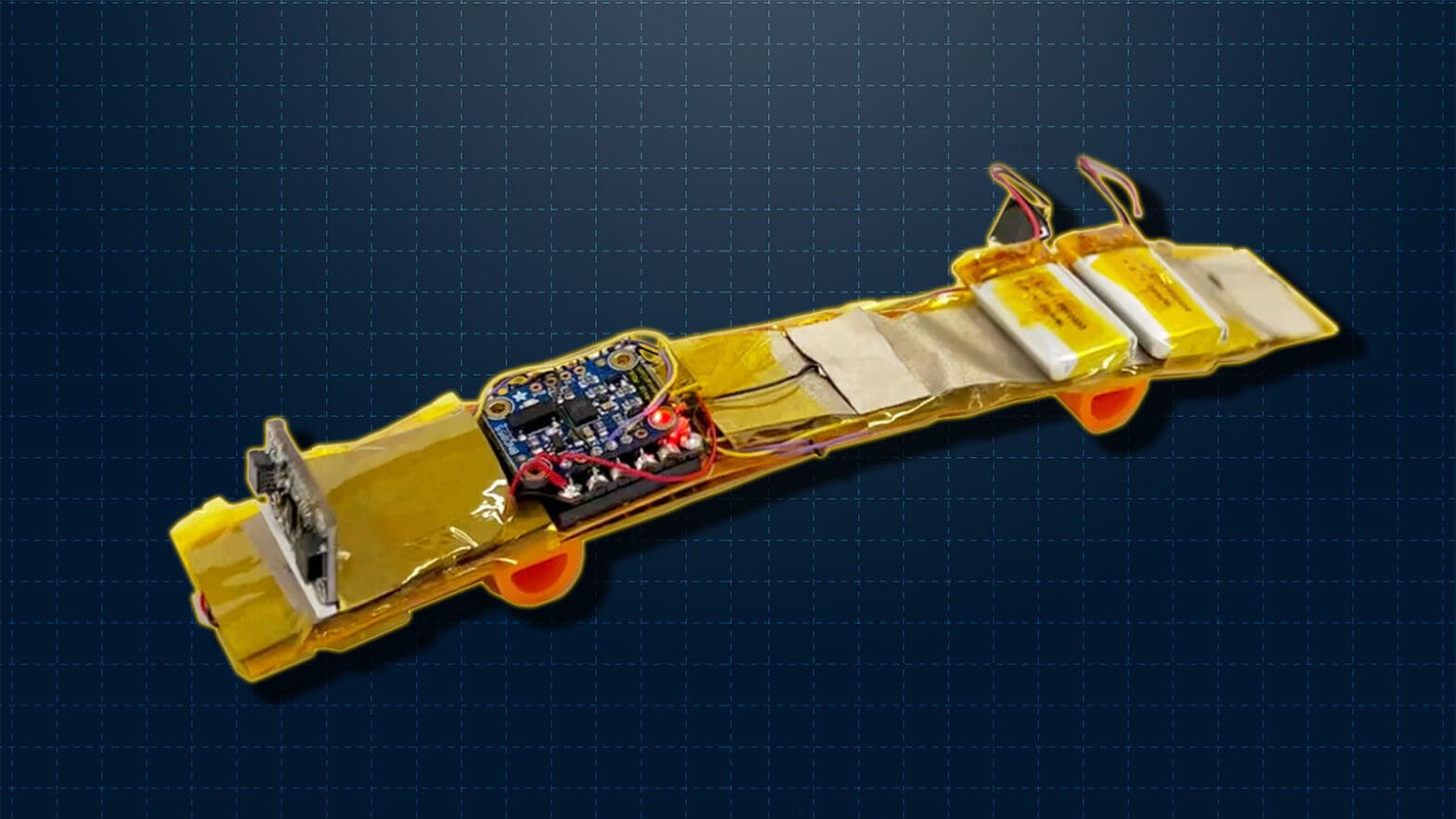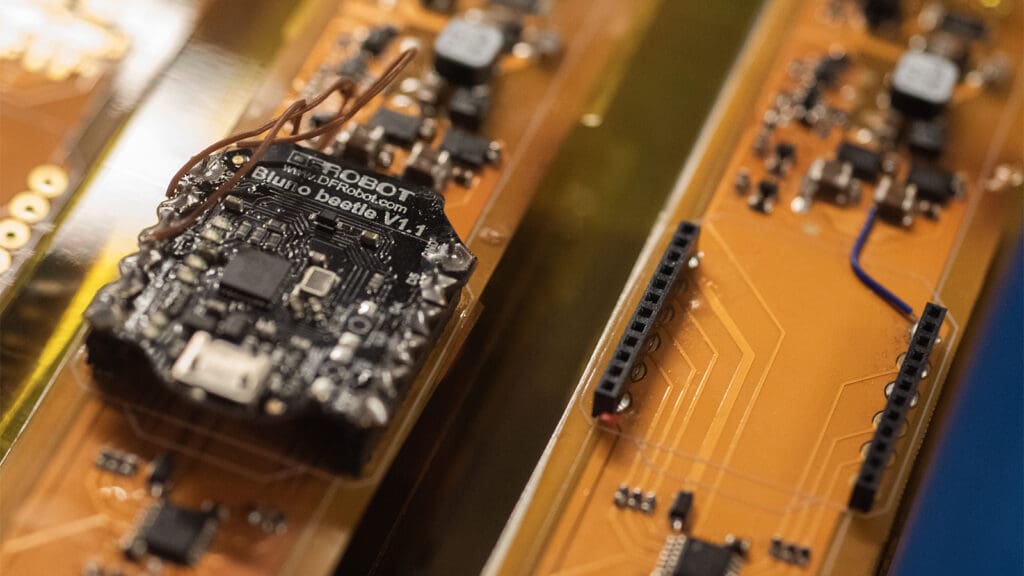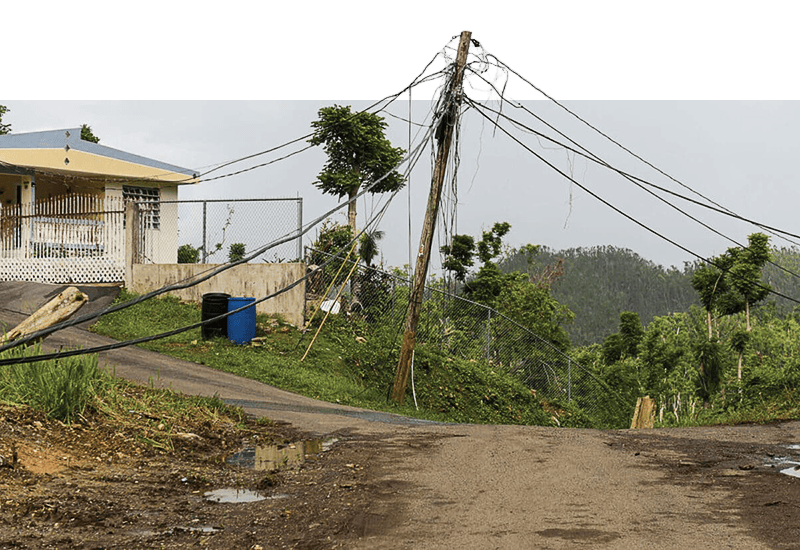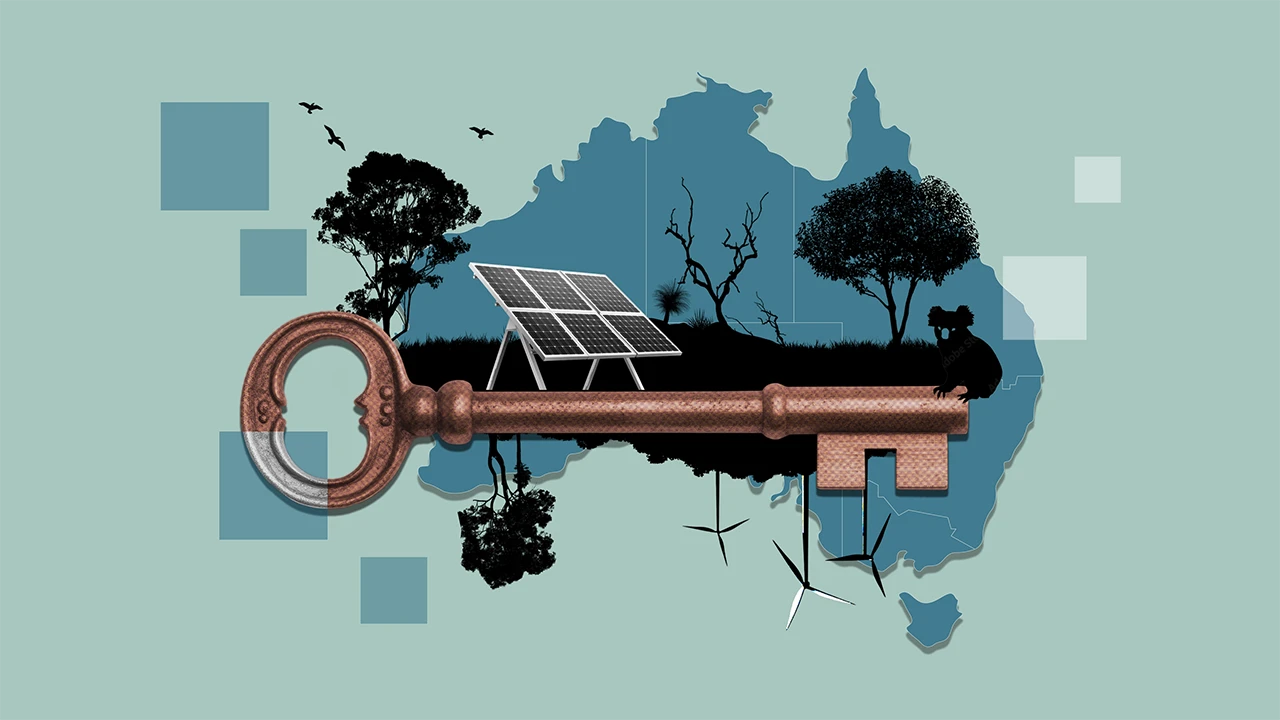
Inch by inch, this machine is leading soft robotics to a more energy efficient future
By
on
(Video by Bumper DeJesus and Scott Lyon)
The device marks a new approach to fabricating and powering soft robots, which rely on flexible rather than rigid bodies to move and carry out tasks. Scientists believe soft robots will be useful in everything from surgery to space exploration, but designing and controlling soft bodies comes with its own engineering challenges that differ from rigid-body robotics.
This robot makes use of the piezoelectric effect, which transfers electrical energy into mechanical energy that can power the robot with carefully timed pulses. One pulse causes the flexible body to bend one way; a different pulse causes it to bend the other way. Using advanced power electronics designs and embedded sensors and control systems, the team created a fully untethered soft robot that has an energy efficiency comparable to land animals. Called eViper, this new wiggling machine could lead the way on making robotic systems more energy efficient for a future with exploding demand.

“Future robotic systems need high energy efficiency,” said Minjie Chen, an assistant professor of electrical and computer engineering and one of the project’s principal investigators. “The eViper platform enables us to explore electrical, mechanical and power co-design to maximize the energy efficiency.”
The team has published a raft of papers on this project over the past year. The latest paper, presented at the 2023 IEEE International Conference on Intelligent Robots and Systems (IROS), was among the finalists for a best paper award.
In addition to Chen, the research was led by Princeton graduate students Hsin Cheng, Zhiwu Zheng and Prakhar Kumar, and professors Naveen Verma, James Sturm and Sigurd Wagner. The work has received support from Princeton Materials Institute, Princeton Plasma Physics Laboratory, Semiconductor Research Corporation, and the Andlinger Center for Energy and the Environment.









